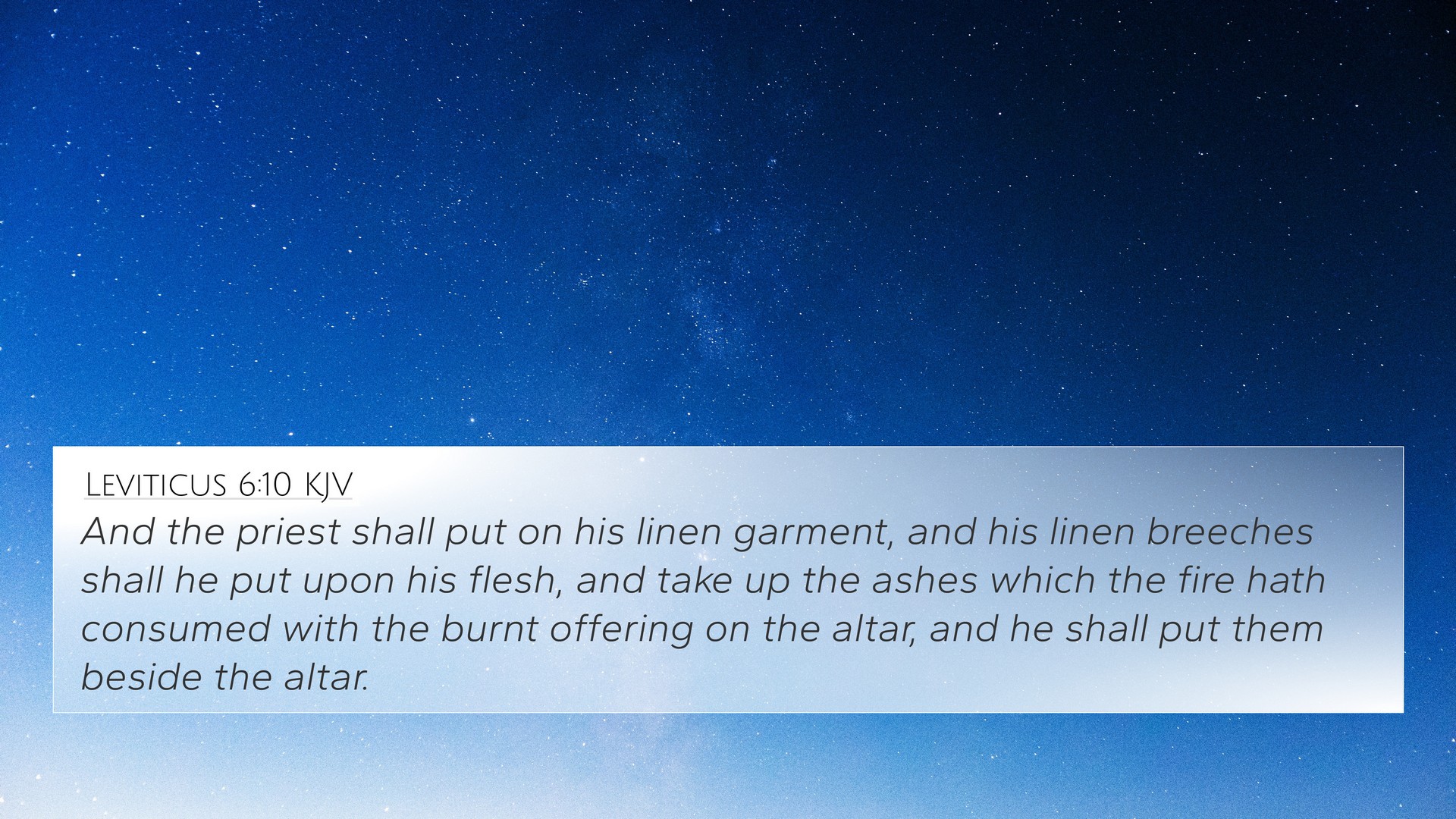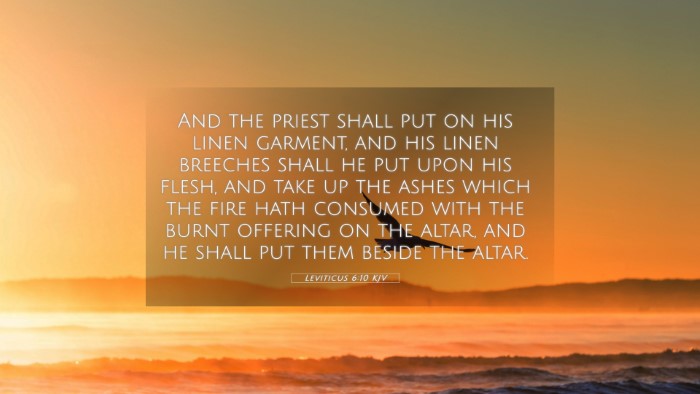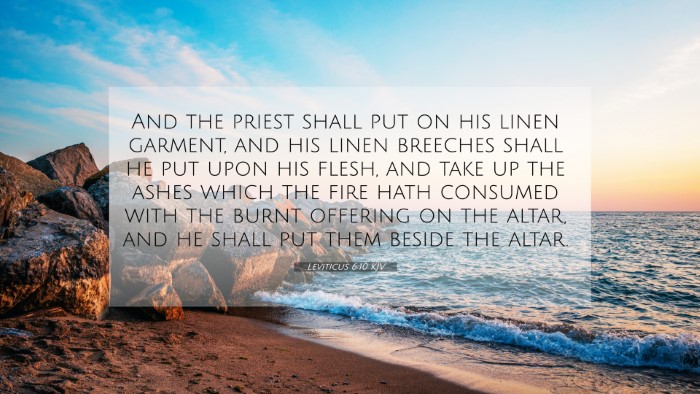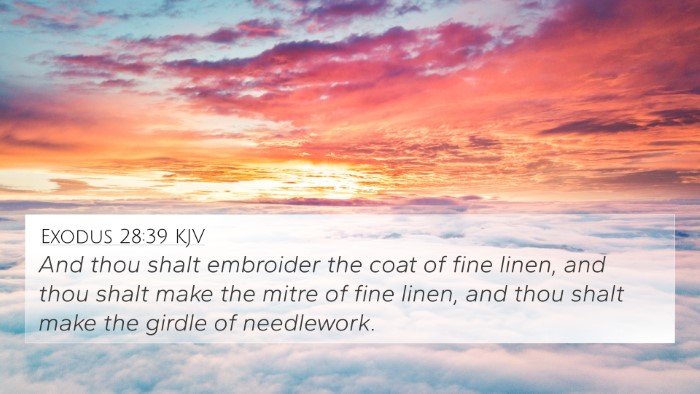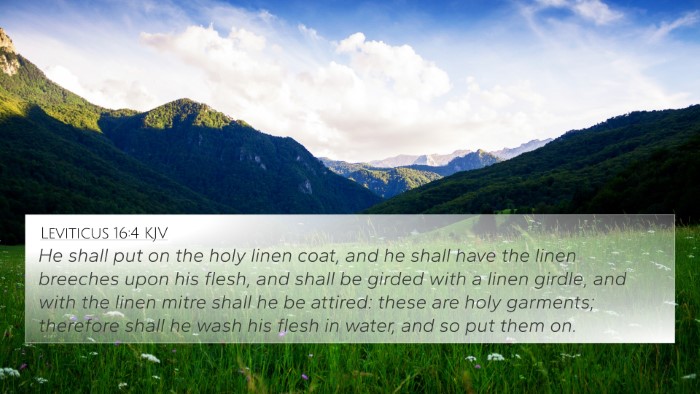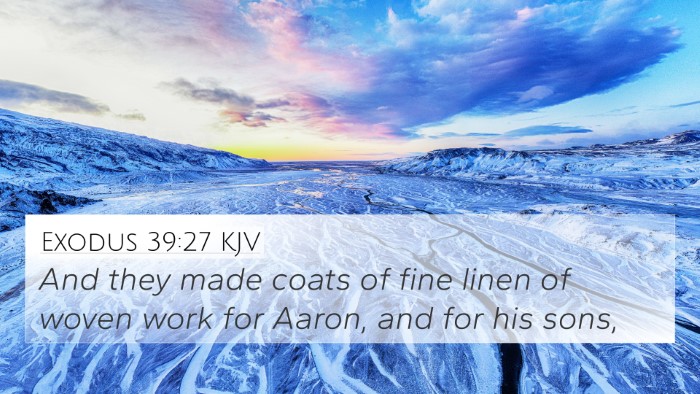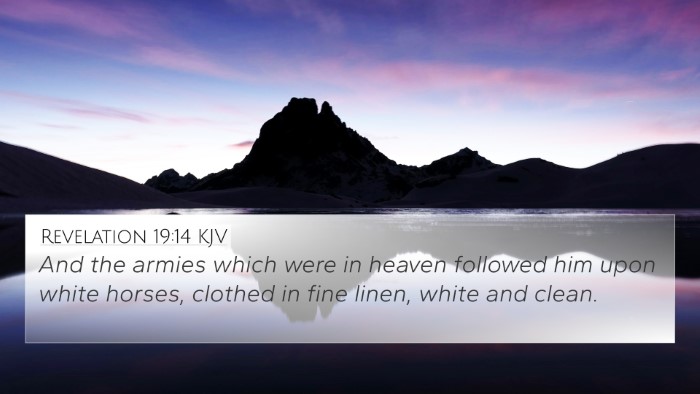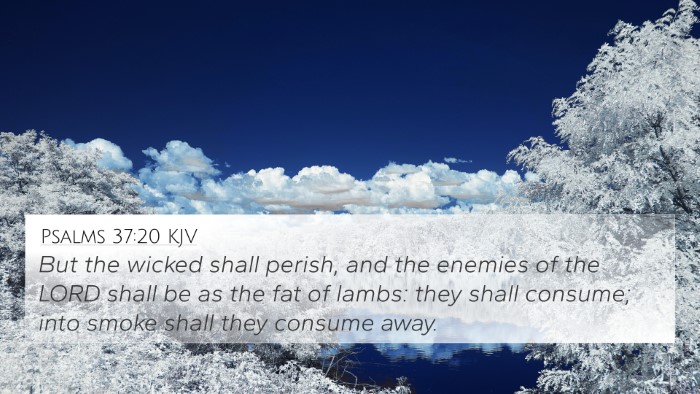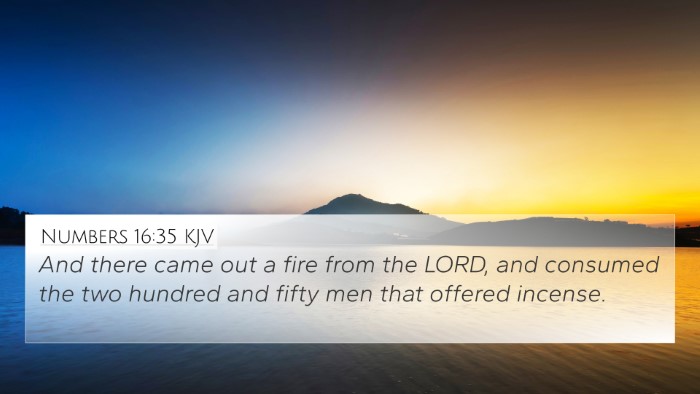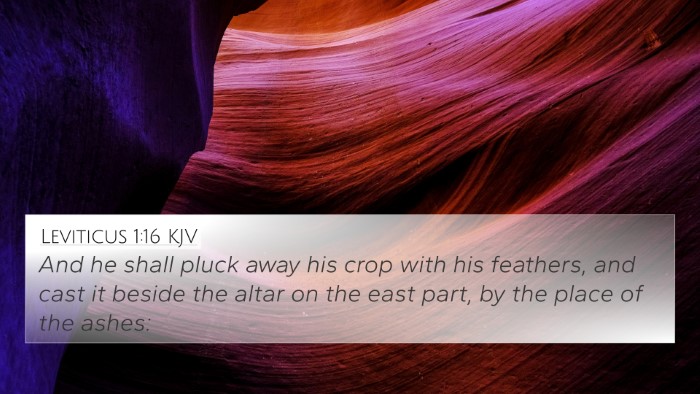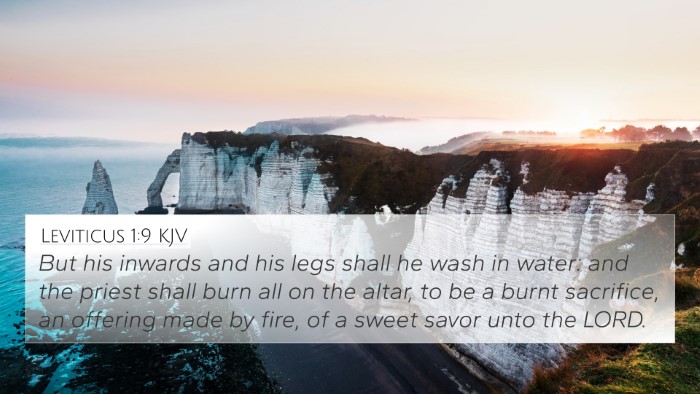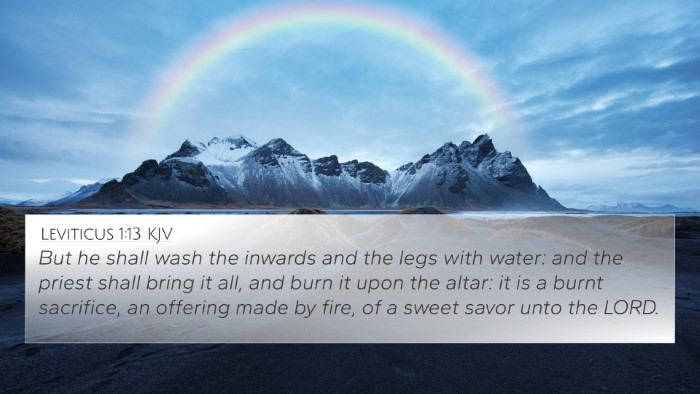Meaning and Interpretation of Leviticus 6:10
Leviticus 6:10 states: "And the priest shall put on his linen garment, and his linen breeches shall he put upon his flesh, and take up the ashes which the fire hath consumed with the burnt offering on the altar, and he shall put them beside the altar."
This verse instructs the priest on the proper attire and procedure for handling the ashes of the burnt offering, emphasizing the importance of ritual purity and respect for the sacrificial rites in ancient Israel.
Commentary Insights
The insights from notable public domain commentaries enhance our understanding of this verse:
-
Matthew Henry:
Henry explains that this instruction reflects the necessity for the priest to maintain ceremonial cleanliness. The act of changing into special linen garments denotes the sacredness of the task at hand.
-
Albert Barnes:
Barnes highlights the symbolism of the ashes, noting that they represent the consumed offering and have spiritual implications related to purification and atonement.
-
Adam Clarke:
Clarke points out that the priest's attire signifies his role as a mediator between God and the people, underlining the solemnity of the duties required in the sacrificial system.
Spiritual Significance
The priest wearing linen garments is significant for several reasons:
- Ceremonial Cleanliness: The linen fabric represents purity and separation from common use, appropriate for performing sacred duties.
- Symbol of Holiness: The act of changing into specific garments signifies the holiness required in approaching God.
- Connection to the Offering: The handling of ashes signifies the completion of the burnt offering, illustrating the necessity of dealing with the physical remnants of spiritual acts.
Cross-References
Leviticus 6:10 relates closely to various scriptures throughout the Bible. Here are some significant cross-references:
- Exodus 28:2-4: Discusses the garments of the high priest, indicating their significance and purpose.
- Leviticus 10:6: Touches on the importance of the priest's attire during sacrificial activities, emphasizing reverence.
- Numbers 19:17-19: Discusses the ashes used for purification, linking to the theme of sacrificial ashes.
- Hebrews 13:10: References the altar and the sacrifices, relating New Testament teachings to the Old Testament practices.
- 1 Peter 2:5: Describes believers as a royal priesthood, connecting themes of sacrifice and priestly responsibilities.
- Leviticus 1:8-9: Details the parts of the burnt offering that must be consumed, further linking to the significance of the ashes.
- Isaiah 61:3: This verse speaks of God's intention to provide beauty instead of ashes, indicating the transformative aspect of sacrificial offerings.
Thematic Connections
Through understanding Leviticus 6:10, we observe the themes of:
- Purity: The extensive details surrounding the priest's garments and actions reflect the overarching theme of purity in service to God.
- Sacrifice: The continuous referencing of sacrifices throughout Leviticus highlights God's desire for atonement and relationship.
- Holiness: The emphasis on holy attire and actions surfaces the theme of approaching the divine with reverence.
Conclusion
In summary, Leviticus 6:10 provides rich insights into the priestly duties and the significance of ceremonial cleanliness in worship. It lays the groundwork for understanding both the Old Testament sacrificial system and its connections to New Testament teachings.
Utilizing tools for Bible cross-referencing can enhance one’s study of this verse, aiding in a deeper understanding of its context and significance within the broader biblical narrative.
